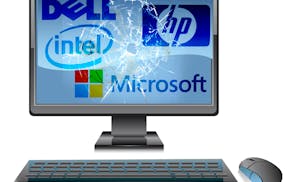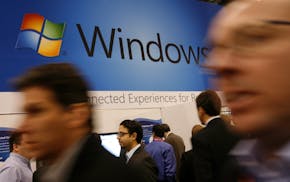Q: I received nine e-mails with photos from a relative in Puerto Rico. When I opened the first one, it suddenly disappeared from view. I thought that I had inadvertently deleted it in some way and checked in the "trash" file, but it wasn't there. So I went back to the "inbox" to open the second e-mail, and to my surprise, none of the eight remaining e-mails were there. However, all other e-mails I had received were still there, and my computer is otherwise working perfectly. What happened?
ANDY FUERTES, Miami
A: I suspect that a computer glitch at your e-mail provider caused your e-mail to disappear.
While your e-mail provider is bellsouth.net, it is owned by AT&T, which in turn outsources its consumer e-mail accounts to Yahoo. Yahoo's e-mail software was upgraded in April, and following that there were scattered reports of people mysteriously losing e-mail from their accounts.
You can take your particular problem directly to Yahoo by typing in "e-mail is disappearing" at tinyurl.com/bp2omd9. You'll be asked to sign in to your e-mail, then allowed to describe your problem in more detail.
Yahoo also offers a help page for people who have lost e-mails (see tinyurl.com/d9p96u3) that suggests ways to search your other e-mail folders for missing messages. It also tells you what to do if you believe your e-mail account has been hacked.
Q: I had problems with your explanation two weeks ago of how to get rid of the browser hijacking program "start.search.us.com." When I went to the website you recommended and downloaded the "free" software there, it turned out to be software that cost me $30 and showed that I had 553 errors on my computer. When I called to "activate" the software, a technician urged me to pay another $200 to clean up the computer problems.
When recommending software, you should check out these people.
Dewayne Moss, Mishawaka, Ind.
A: I'm afraid you downloaded the wrong software, but it's partly my fault. I should have warned readers that these free advice websites are often cluttered with advertisements for related software, not all of it reputable. As a result, it's easy to click on the wrong software download, as I believe you did. I apologize for that.
The free download on the website I suggested (see tinyurl.com/cpgldyn) is the legitimate free program Malwarebytes. A safer way for you to download the software is to go to tinyurl.com/blqaum7, scroll down to "Malwarebytes Anti-Malware" and click the green "download now" button on the right. You should get a pop-up box that says "mbam-setup-1.75.0.1300.exe." You'll be asked to run or save the program, depending on which Web browser you're using. If you save it, go to your browser's "tools" menu, choose downloads and double click the program to install it.
E-mail tech questions to steve.j.alexander@
gmail.com or write to Tech Q&A, 425 Portland Av. S., Minneapolis, MN 55488. Include name, city and telephone number.

Alexander: A beeping computer is telling you what's gone wrong inside

Alexander: How to stop deleted iPhone e-mails from coming back

Alexander: Refurbished PCs may need a BIOS update to use new components

Alexander: Windows 11 not always to blame for browser or e-mail problems


